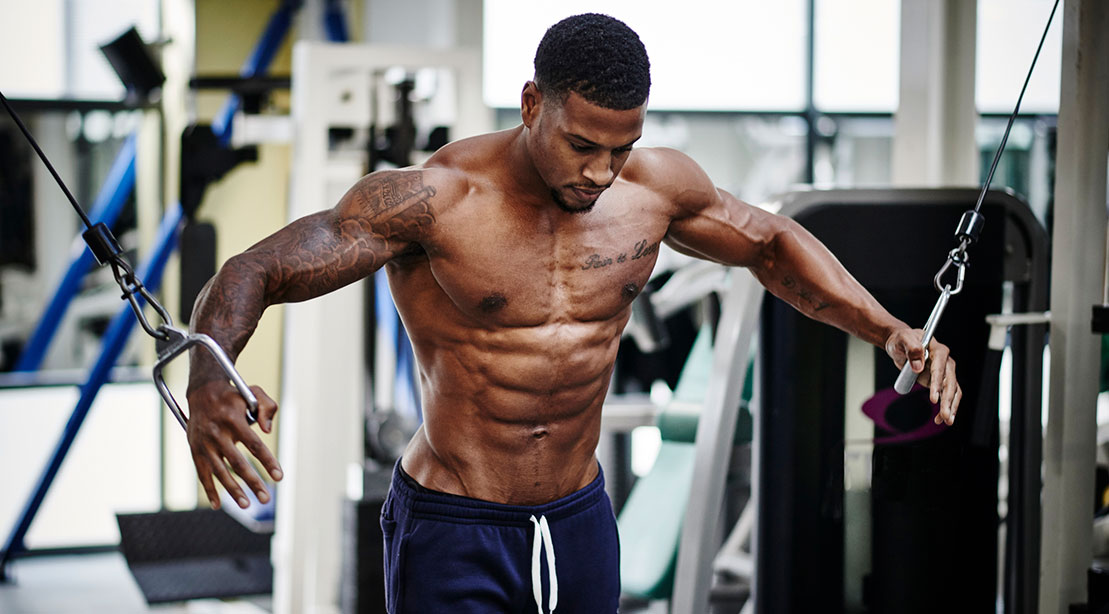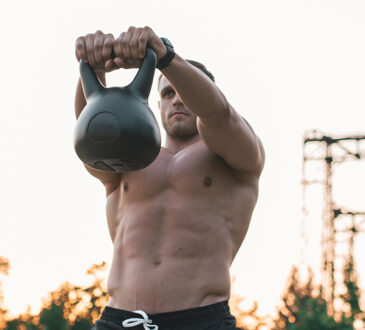
The shoulder joints (and its connective muscles, tendons, and ligaments) have a greater range of motion than all other joints in the human body. This ball-and-socket joint (similar to your hip joint) provides a full rotation of movement, so it¡¯s no surprise that the group of muscles and connections that combine to facilitate this movement is called the rotator cuff. The extremely complex anatomical structure that provides so much flexibility in movement patterns also unfortunately makes the shoulder joint quite susceptible to injury, especially to those who spend a lot of time in the gym pushing and pulling heavy iron.
So if your shoulders are constantly in pain, there is a good chance you have irritated and inflamed the joint. Be sure to take note of these seven reasons your rotator cuffs might hate you.
1 of 7

Not Warming Up Enough
This may be the most common cause of rotator cuff issues. Most trainees don¡¯t take the time to warm up their shoulders properly before beginning their first upper body movement. I highly recommend everybody put together a basic series of calisthenic-type exercises (such as arm windmills, shoulder rolls, and neck rolls) followed by high-rep sets of rear, front, and side laterals, as well as overhead presses?before each workout.
Then when you get to your first working set, make sure to perform several progressively heavier warm-up sets to prepare the joint for the exact movement pattern it will soon be engaged in under high loads.
2 of 7

Performing Behind the Neck Movements Incorrectly
Behind-the-neck pulldowns and presses have been responsible for many injured rotator cuffs. However, neither of these two exercises is inherently ¡°evil.¡± The problems lie in an exaggerated range of motion, improper technique, or too much weight (when the joint is in a somewhat compromised position, this can be hazardous). I suggest never allowing the bar on pulldowns or presses to go below the level of the bottom of the ears to keep from overstretching the attachments.
Also, make sure to move the weight extra slowly, such as two- to three-second positives and negatives, to keep the tension on the muscle and off the joint. Finally, it¡¯s best to perform no more than eight to 10 reps on behind the neck exercises.
3 of 7

You¡¯re Abusing Upright Rows
This is another exercise that can be hard on the rotators, but in a different way than those in number two above. The problem here is when you perform this movement with too close of a grip or you lift the bar too high at the point of peak contraction. This can cause impingement at the joint, which can result in pain and irritation of the rotator cuff tendons and, eventually, a chronic condition. I suggest utilizing a shoulder-width grip on the bar and pulling it no higher than the point where the elbows are in line with the shoulders.
4 of 7

You¡¯re Overusing Your Shoulders
Overuse injuries happen when you use the same exercises too often in a training program. Rotator cuffs are particularly susceptible to this type of issue. Unfortunately when we force our bodies to use the same movement pattern over and over, it causes micro trauma in the surrounding tendons, bones, and joints, eventually leading to injury. This can easily be avoided by constantly switching different exercises in and out of your workouts on a rotating basis.
5 of 7

You Aren¡¯t Training Your Rotators Directly
I rarely see people in the gym performing exercises that directly target the various rotator cuff muscles. This will eventually create a strength imbalance between the upper body muscle groups, which in time will force the rotators to withstand loads they¡¯re not prepared for. If you add 100 lbs. to your bench press you better also make sure your rotator cuffs are getting as proportionately strong as your delts, tris, and pecs. Learn about the various internal and external rotation exercises and add them into your routine.
6 of 7

You¡¯re Going Too Heavy Too Often
While heavy, lower rep training is both satisfying and effective, it¡¯s not the best way to go about making continuous progress in muscle growth. In addition, forcing the rotator cuffs to constantly deal with extremely heavy poundage isn¡¯t the way to keep your shoulder joints healthy and pain free. Remember that the rotator cuffs are not built for heavy pounding like the main deltoid muscles, so you need to take care to rotate your training between periods of low, medium, and high reps in order to allow for proper recovery.
7 of 7

You¡¯re Using Sloppy Form and Technique
By far, poor lifting form and technique is the biggest culprit in training-related injuries. Using momentum, body english, swinging, or uncontrolled rep speeds can wreak havoc on the lower back, neck, knees, hips, wrists, elbows, and without a doubt, the rotator cuffs. Keep your ego in check and to always move the weights from point A to B under full control, and by using only the intended target muscles.?




